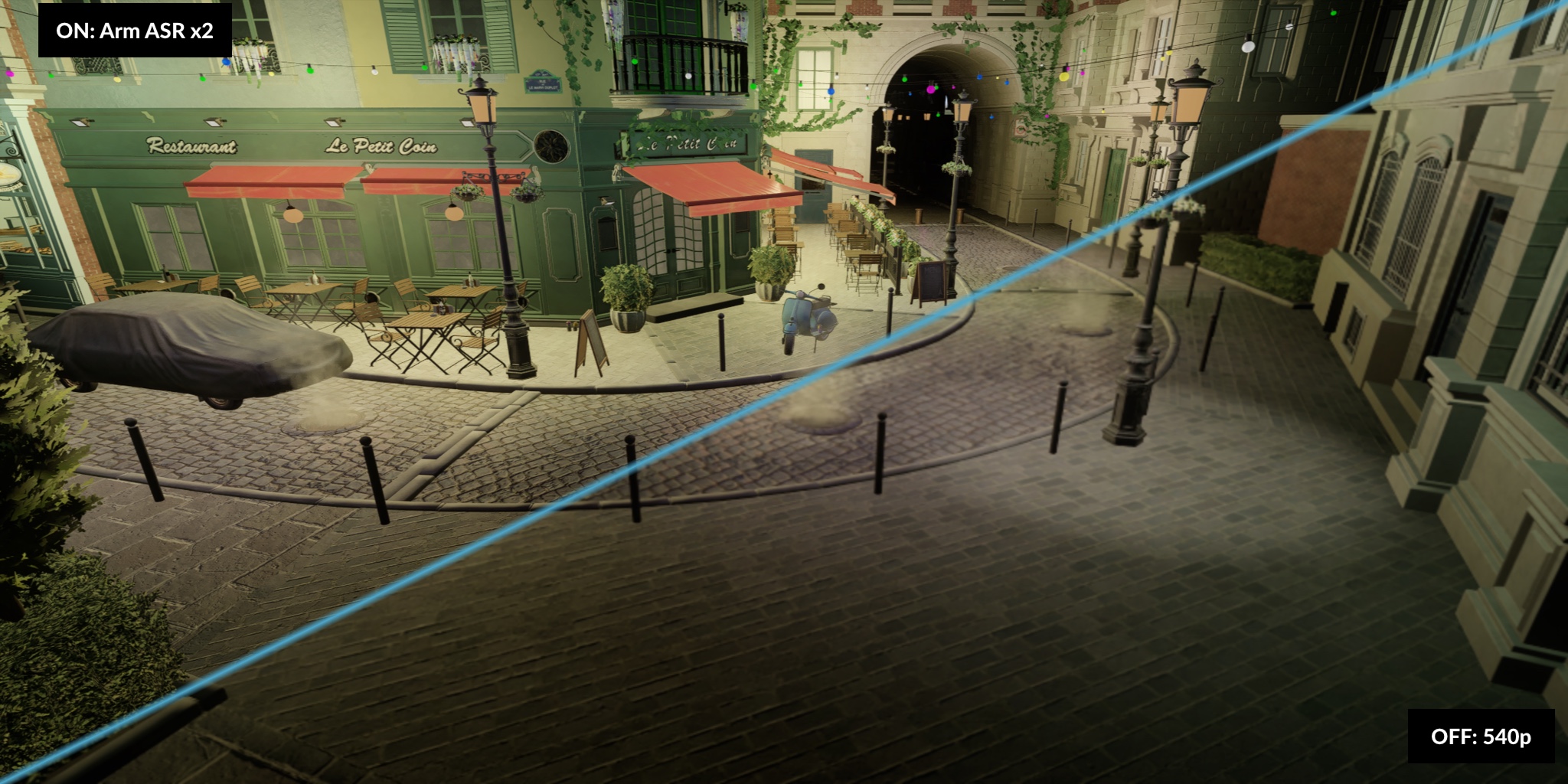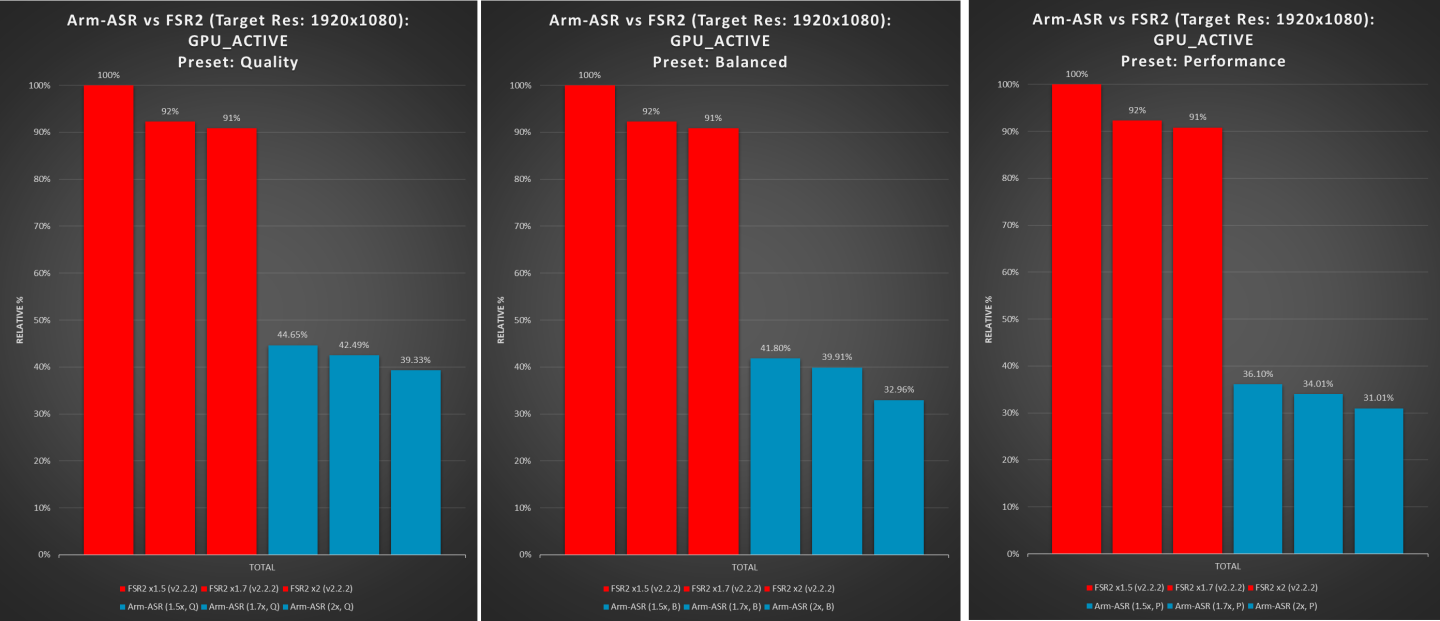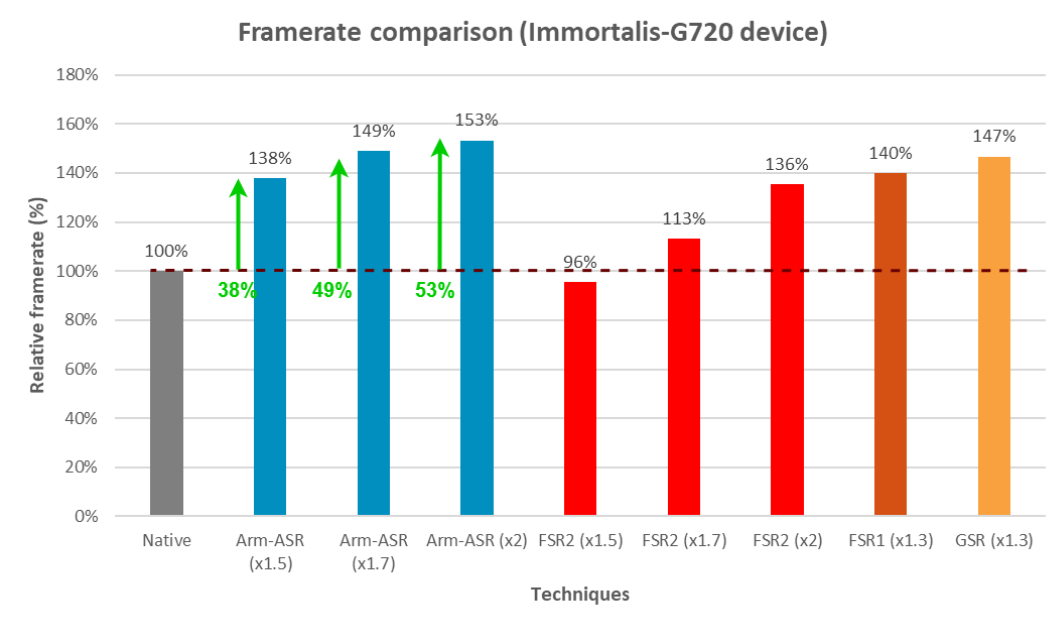
Some of the best Arm processors come from companies like Apple and Qualcomm, which license Arm's processor instruction set but create their own custom or semi-custom CPU designs. But Arm continues to plug away on its own CPU and GPU architectures and related technologies, and the company has announced that it's getting into the crowded field of graphics upscaling technology.
Arm's Accuracy Super Resolution (ASR) is a temporal upscaler that is based on AMD's open source FidelityFX Super Resolution 2, which Arm says allows developers to "benefit from the familiar API and configuration options." (This AMD presentation from GDC 2023 gets into some of the differences between different kinds of upscalers.)
AMD's FSR and Nvidia's DLSS on gaming PCs are mostly sold as a way to boost graphical fidelity—increasing frame rates beyond 60 fps or rendering "4K" images on graphics cards that are too slow to do those things natively, for example. But since Arm devices are still (mostly, for now) phones and tablets, Arm is leaning into the potential power savings that are possible with lower GPU use. A less-busy GPU also runs cooler, reducing the likelihood of thermal throttling; Arm mentions reduced throttling as a benefit of ASR, though it doesn't say how much of ASR's performance advantage over FSR is attributable to reduced throttling.
"Using [ASR] rendered high-quality results at a stable, low temperature," writes Arm Director for Ecosystem Strategy Peter Hodges. "Rendering at a native resolution inevitably led to undesirable thermal throttling, which in games can ruin the user experience and shorten engagement."
Why not just use FSR2 without modification? Arm claims that the ASR upscaling tech has been tuned to reduce GPU usage and to run well on devices without a ton of memory bandwidth—think low-power mobile GPUs with integrated graphics rather than desktop-class graphics cards. ASR's GPU use is as little as one-third of FSR2's at the same target resolutions and scaling factors. Arm also claims that ASR delivers roughly 20 to 40 percent better frame rates than FSR2 on Arm devices, depending on the settings you're using.
-
 Arm also says that reduced GPU usage when using ASR can lead to lower heat and improved battery life.Arm
Arm also says that reduced GPU usage when using ASR can lead to lower heat and improved battery life.Arm -
 Arm says that ASR runs faster and uses less power than FSR on the same mobile hardware.Arm
Arm says that ASR runs faster and uses less power than FSR on the same mobile hardware.Arm
Arm says it used "a commercial mobile device that features an Arm Immortalis-G720 GPU" for its performance testing and that it worked with MediaTek to corroborate its power consumption numbers "using a Dimensity 9300 handset."
When the ASR spec is released, it will be up to OS makers and game developers to implement it. Apple will likely stick with its own MetalFX upscaling technology—also derived from AMD's FSR, for what that's worth. Microsoft is pushing "Automatic Super Resolution" on Arm devices while also attempting to develop a vendor-agnostic upscaling API in "DirectSR." Qualcomm announced Snapdragon Game Super Resolution a little over a year ago.
Arm's upscaler has the benefit of being hardware-agnostic and also open-source (Arm says it "want(s) to share [ASR] with the developer community under an MIT open-source license") so that other upscalers can benefit from its improvements. Qualcomm's upscaler is also a simpler spatial upscaler a la AMD's first-generation FSR algorithm, so Arm's upscaler could also end up producing superior image quality on the same GPUs.
We're undeniably getting into that one xkcd comic about the proliferation of standards territory here, but it's at least interesting to see different companies using graphics upscaling technology to solve problems other than "make games look nicer."
Listing image by Arm



3175x175(CURRENT).thumb.jpg.b05acc060982b36f5891ba728e6d953c.jpg)
Recommended Comments
There are no comments to display.
Join the conversation
You can post now and register later. If you have an account, sign in now to post with your account.
Note: Your post will require moderator approval before it will be visible.